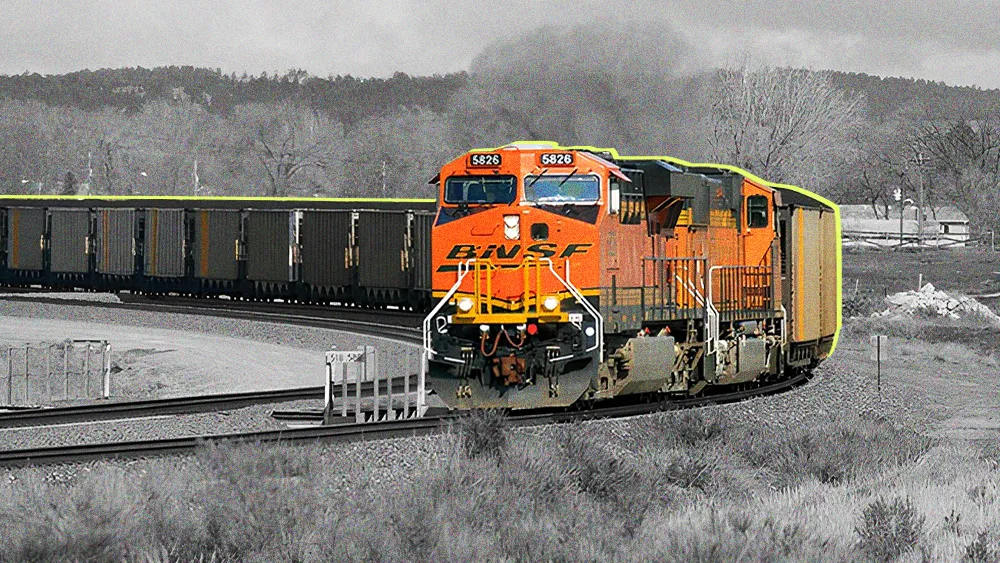
Key Points
- Anju Gupta, Chief Data and AI Officer at BNSF Railway, spoke with CIO News about her playbooks for AI transformation.
- Drawing on her experience in finance and logistics, Gupta said the core principles for governance, model risk management, and even corporate use cases are strikingly similar, regardless of the sector.
- A job rooted in repeatable best practices is often the most effective implementation strategy.
- Gupta warned leaders to escape "pilot purgatory" by securing a true executive mandate and focusing on a few high-value projects, while also upskilling the "frozen middle" of management to accelerate adoption.
What does underwriting a life insurance policy have in common with optimizing a freight rail network? On the surface, nothing. One deals in actuarial tables and individual risk; the other in steel, logistics, and the immense physical complexity of moving goods across a continent. Yet behind the curtain of these vastly different industries, a surprising reality is taking hold. As companies rush to deploy AI, we've illuminated how AI doesn’t rewrite the fundamentals. Governance, strategy, and cultural readiness remain the levers of transformation, and the barriers are strikingly consistent across sectors.
For leaders in highly regulated, asset-heavy enterprises, the playbook for integrating artificial intelligence is becoming shockingly universal. The secret is realizing that whether you’re managing financial derivatives or freight cars, the underlying human and technical systems follow the same fundamental rules.
We spoke with Anju Gupta, a leader whose career is a testament to this principle. As the new Chief Data and AI Officer at BNSF Railway, she offered a perspective forged in the worlds of finance at Northwestern Mutual and mobility at Enterprise Holdings. A decorated executive featured as one of CDO Magazine's Top 50 Global Data Power Women, Gupta argued that the foundational elements of AI strategy are not just similar across sectors—they are often identical.
The regulated industry playbook: "When you think about model risk management, AI governance, and the upskilling of your talent, it's a replicable playbook across industries. You have to have a fairly robust model risk management framework, including model documentation and model versioning. Those regulatory standards cut across any vertical, as long as it's a regulated industry."
A universal language: Much of AI’s universality comes not only from governance and risk frameworks, but also from the simple fact that many business functions look the same across sectors. "The use cases don't drastically change, believe it or not. Because HR functions are HR functions no matter where you go; they have needs for AI. Corporate functions are a one-to-one translation, operational efficiency use cases are a one-to-one translation."
The first step in this universal playbook is escaping the trap of "pilot purgatory," where innovation dies a slow death by a thousand small, disconnected experiments. Gupta explained that for her, success begins with ruthless focus.
Escaping pilot purgatory: "In any company, the list of AI use cases runs in the hundreds. It normally starts bottoms-up, with people working on a lot of projects because AI is so easily available. We need to move away from spreading ourselves too thin to honing in on a few strategic projects that will extract real value."
The executive mandate: It takes more than verbal approval from the C-suite. Sustained focus requires a genuine commitment of the organization’s greatest asset—its people. "Driving AI has to be an executive team agenda. If you don't have buy-in from the execs, it's not going to cut through. You need dedicated resources. AI will not be successful if you don't have dedicated SMEs, and SMEs are probably one of the golden assets any company has."

With a clear strategy in place, the greatest variable becomes the organization’s culture. While the technical blueprints may be the same, Gupta noted that culture is the throttle determining how fast an organization can truly move.
The cultural throttle: "Culture is extremely critical. That helps with the pace by which you can deploy," she explained. "You'll still put things into production, but the pace may be different if your culture is not ready." That cultural readiness often determines whether momentum builds across the organization or stalls in place. "I've seen it where you have an executive agenda and a bottom-up approach working, but the middle layer is just not ready. That's why I feel so strongly about upskilling the middle-management team, so they can understand the value and get comfortable with what's coming."
This all relies on a modern data foundation. In legacy environments, that means moving beyond disorganized data lakes and toward a more sophisticated, product-centric approach.
The AI data product: "The concept of every AI product being tied in with an associated data product is critical," Gupta said. This means creating purpose-built, curated data assets—from operational data to previously untapped unstructured knowledge—designed specifically to fuel AI solutions.
A continuous process: "It's very different from pure software development, where there are features and specifications—you build and you are done. These are learning systems; it's not one and done. It's a continuous iteration process where you have to constantly monitor the realized gain."
The goal of transformation is for AI to disappear from conversation, not because it failed, but because it has become an invisible, indispensable part of the operational fabric. This reframes the entire mission from a series of projects to a state of perpetual evolution. There is no last mile in this journey, because the system is always learning.
"It has to be in the fabric of everything that the company does," Gupta concluded. "It shouldn't be 'a thing'; it should just be the norm."
.svg)

.webp)



